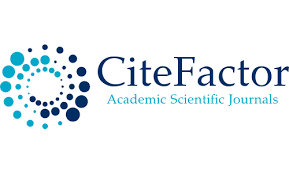Semantic and Structural Differentiation of Euphemisms
Keywords:
offensive, vague, phenomenon, euphemismsAbstract
The current article is devoted to the study of semantic and structural Differentiation of Euphemisms. It discusses the differences and similarities of euphemisms in the sphere of business, diseases and medicine. Euphemisms are used to replace social taboos, swearing, blasphemy, profanity and other offensive language, but they can be used just to make a common word sound more sophisticated. For indirect expressing, stylistic means like figures of speech can be used for expressing euphemisms. Another subject mentioned in the paper is euphemistic strategies discussed from pragmatic point of view.
References
Allan, Keith. 1991. Euphemism and Dysphemism: Language Used as a Shield and Weapon. New York: Oxford University Press.p23
Alego, John. 2005. The Origins and Development of the English Language. Boston:Wadsworth.
Alkire, Scott. 2002. “Introducing Euphemisms to Language Learners”.
Bedroll, Linda. 2007. A Very Nice Ways, How to Say Very Bad Things. Naperville: Sourcebooks.
Burridge, Kate. 2004. Blooming English. New York: Cambridge University Press.p95
Crystal, David. 2002. The English Language. London: Penguin Books.
Enright, Dominique. 2004. In Other Words. London: Michael O´Mara Books Limited.p45
Holder, Bob. 2008. Dictionary of Euphemisms. New York: Oxford University Press.pp 56-58
Hornby, Albert, Sydney. 2005. Oxford Advanced Learner´s Dictionary of Current English.New York: Cambridge University Press.p14
Katamba, Francis. 2005. English words: structure, history, usage. New York: Routledge.
Longman Dictionary of Contemporary English. 2009. Harlow: Pearson/Longman.
Martina Jačková Bachelor Thesis 2010pp43-46
Maslova V.A.(2001) lingvoculturology. Moskow. Academiya p56
Spiegl, Fritz. 1987. In-Words and Out-Words. London: Elm Tree Books.
Ter-minasova,S.G.(2000).Language and intercultural communication. Moskow:Slovo.p45
Downloads
Published
Issue
Section
License

This work is licensed under a Creative Commons Attribution-NonCommercial 4.0 International License.
User Rights
Under the Creative Commons Attribution-NonCommercial 4.0 International (CC-BY-NC), the author (s) and users are free to share (copy, distribute and transmit the contribution).
Rights of Authors
Authors retain the following rights:
1. Copyright and other proprietary rights relating to the article, such as patent rights,
2. the right to use the substance of the article in future works, including lectures and books,
3. the right to reproduce the article for own purposes, provided the copies are not offered for sale,
4. the right to self-archive the article.












